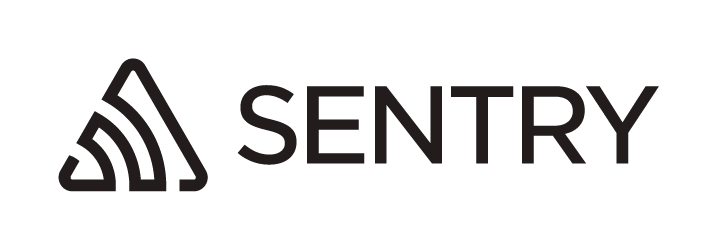- Demo
- Overview
- Motivation
- Technical Aspect
- Installation
- Run
- Deployement on Heroku
- Directory Tree
- To Do
- Bug / Feature Request
- Technologies Used
- ACKNOWLEDGMENT
- Team
- License
- Credits
Link: https://https://wine-prediction-api.herokuapp.com/
Predicting the Quality of Red Wine using Machine Learning Algorithms for Regression Analysis, Data Visualizations and Data Analysis. Description Context The two datasets are related to red and white variants of the Portuguese "Vinho Verde" wine. For more details, consult the reference [Cortez et al., 2009]. Due to privacy and logistic issues, only physicochemical (inputs) and sensory (the output) variables are available (e.g. there is no data about grape types, wine brand, wine selling price, etc.). These datasets can be viewed as classification or regression tasks. The classes are ordered and not balanced (e.g. there are much more normal wines than excellent or poor ones). This dataset is also available from the UCI machine learning repository, https://archive.ics.uci.edu/ml/datasets/wine+quality , I just shared it to kaggle for convenience. (If I am mistaken and the public license type disallowed me from doing so, I will take this down if requested.) Content For more information, read [Cortez et al., 2009]. Input variables (based on physicochemical tests): 1 - fixed acidity 2 - volatile acidity 3 - citric acid 4 - residual sugar 5 - chlorides 6 - free sulfur dioxide 7 - total sulfur dioxide 8 - density 9 - pH 10 - sulphates 11 - alcohol Output variable (based on sensory data): 12 - quality (score between 0 and 10).
What could be a perfect way to utilize unfortunate lockdown period? Like most of you, I spend my time in cooking, Netflix, coding and reading some latest research papers on weekends. The idea of classifying indian currency struck to me when I was browsing through some research papers. I couldn't find any relevant research paper (and of course dataset!) associated with it. And that led me to collect the images of Indian currency to train a deep learning model using this amazing tool.
This project is divided into two part:
- Training a deep learning model using Keras. (Not covered in this repo. I'll update the link here once I make it public.)
- Building and hosting a Flask web app on Heroku.
- A user can choose image from a device or capture it using a pre-built camera.
- Used Amazon S3 Bucket to store the uploaded image and predictions.
- Used CSRF Token to protect against CSRF attacks.
- Used Sentry to catch the exception on the back-end.
- After uploading the image, the predictions are displayed on a Bar Chart.
The Code is written in Python 3.7. If you don't have Python installed you can find it here. If you are using a lower version of Python you can upgrade using the pip package, ensuring you have the latest version of pip. To install the required packages and libraries, run this command in the project directory after cloning the repository:
pip install -r requirements.txtSTEP 1
Open .bashrc or .zshrc file and add the following credentials:
export AWS_ACCESS_KEY="your_aws_access_key"
export AWS_SECRET_KEY="your_aws_secret_key"
export ICP_BUCKET='your_aws_bucket_name'
export ICP_BUCKET_REGION='bucket_region'
export ICP_UPLOAD_DIR='bucket_path_to_save_images'
export ICP_PRED_DIR='bucket_path_to_save_predictions'
export ICP_FLASK_SECRET_KEY='anything_random_but_unique'
export SENTRY_INIT='URL_given_by_sentry'Note: SENTRY_INIT is optional, only if you want to catch exceptions in the app, else comment/remove the dependencies and code associated with sentry in app/main.py
Since, I don't have a system with Windows OS, here I collected some helpful resource on adding User Environment Variables in Windows.
Attention: Please perform the steps given in these tutorials at your own risk. Please don't mess up with the System Variables. It can potentially damage your PC. You should know what you're doing.
- https://www.tenforums.com/tutorials/121855-edit-user-system-environment-variables-windows.html
- https://www.onmsft.com/how-to/how-to-set-an-environment-variable-in-windows-10
STEP 2
To run the app in a local machine, shoot this command in the project directory:
gunicorn wsgi:appSet the environment variable on Heroku as mentioned in STEP 1 in the Run section. [Reference]
Our next step would be to follow the instruction given on Heroku Documentation to deploy a web app.
├── app
│ ├── __init__.py
│ ├── main.py
│ ├── model
│ ├── static
│ └── templates
├── config
│ ├── __init__.py
├── processing
│ ├── __init__.py
├── requirements.txt
├── runtime.txt
├── LICENSE
├── Procfile
├── README.md
└── wsgi.py
- Convert the app to run without any internet connection, i.e. PWA.
- Add a better vizualization chart to display the predictions.
If you find a bug (the website couldn't handle the query and / or gave undesired results), kindly open an issue here by including your search query and the expected result.
If you'd like to request a new function, feel free to do so by opening an issue here. Please include sample queries and their corresponding results.
**Acknowledgements:
This dataset is also available from the UCI machine learning repository, https://archive.ics.uci.edu/ml/datasets/wine+quality , I just shared it to kaggle for convenience. (I am mistaken and the public license type disallowed me from doing so, I will take this down at first request. I am not the owner of this dataset. Please include this citation if you plan to use this database: P. Cortez, A. Cerdeira, F. Almeida, T. Matos and J. Reis. Modeling wine preferences by data mining from physicochemical properties. In Decision Support Systems, Elsevier, 47(4):547-553, 2009. Relevant publication P. Cortez, A. Cerdeira, F. Almeida, T. Matos and J. Reis. Modeling wine preferences by data mining from physicochemical properties. In Decision Support Systems, Elsevier, 47(4):547-553, 2009.
[SANYAM-GUJRAL]
Licensed under the Apache License, Version 2.0 (the "License"); you may not use this file except in compliance with the License. You may obtain a copy of the License at
http://www.apache.org/licenses/LICENSE-2.0
Unless required by applicable law or agreed to in writing, software distributed under the License is distributed on an "AS IS" BASIS, WITHOUT WARRANTIES OR CONDITIONS OF ANY KIND, either express or implied. See the License for the specific language governing permissions and limitations under the License.
This project wouldn't have been possible without this tool. It saved my enormous amount of time while collecting the data. A huge shout-out to its creator.








